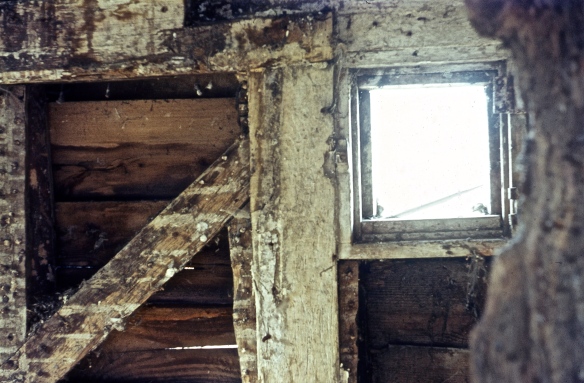CLICK ON IMAGES TO ENLARGE. REPEAT IF REQUIRED.
The moon stayed up late this morning. I am indebted to Laurie Graves at Notes from the Hinterland for the information that such a moon is called ‘Wolf’.
Recent work on opening up our fireplace in order to burn logs in a swan’s nest basket, has prompted me to research the history of chimney sweeps. There is much information on https://en.wikipedia.org/wiki/Chimney_sweep.
This illustration shows a 19th century Italian master sweep and his apprenticed boy
With particular reference to the small children sent up chimneys in UK, Wikipedia tells us that: “Boys as young as four climbed hot flues that could be as narrow as 81 square inches (9×9 inches or 23×23 cm). Work was dangerous and they could get jammed in the flue, suffocate or burn to death. As the soot is a carcinogen, and as the boys slept under the soot sacks and were rarely washed, they were prone to Chimney Sweeps Cancer. From 1775 onwards there was increasing concern for the welfare of the boys, and Acts of Parliament were passed to restrict, and in 1875 to stop this usage.[6] Lord Shaftesbury, the philanthropist, led the later campaign. Chimneys started to appear in Britain around 1200, when they replaced the open fire burning in the middle of the one room house. At first there would be one heated room in the building and chimneys would be large. Over the next four hundred years, rooms became specialized and smaller and many were heated. Sea coal started to replace wood, and it deposited a layer of flammable creosote in the inside surface of the flue, and caked it with soot. Whereas before, the chimney was a vent for the smoke, now the plume of hot gas was used to suck air into the fire, and this required narrower flues[7] Even so, boys rarely climbed chimneys before the Great Fire of London, when building regulations were put in place and the design of chimneys was altered, The new chimneys were often angular and narrow, and the usual dimension of the flue in domestic properties was 9 inches (23 cm) by 14 inches (36 cm). The master sweep was unable to climb into such small spaces himself and employed climbing boys to go up the chimneys to dislodge the soot. The boys often ‘buffed it’, that is, climbed in the nude,[8] propelling themselves by their knees and elbows which were scraped raw. They were often put up hot chimneys, and sometimes up chimneys that were alight in order to extinguish the fire. Chimneys with sharp angles posed a particular hazard.[9] These boys were apprenticed to the sweep, and from 1778 until 1875 a series of laws attempted to regulate their working conditions, and many first hand accounts were documented and published in parliamentary reports. From about 1803, there was an alternative method of brushing chimneys, but sweeps and their clients resisted the change preferring climbing boys to the new Humane Sweeping Machines.[10] Compulsory education was established in 1870 by the Education Act 1870 but it was a further five years before legislation was put in place to license Chimney Sweeps and finally prevent boys being sent up chimneys.[11]”
Now, we have never sent a child up a chimney, but we have sent one under the floorboards. In 1985 we had some reason for needing to access the nether regions of our house in Gracedale Road. I cannot now remember what.
Sam was in fact rather chuffed to be given the responsibility and the opportunity to explore. Carrying a torch he slid down the hole.
Here he is on the descent,
and as he emerges with whatever he went down for, and the bonus of a packet of Wild Woodbines.
This evening we dined on Jackie’s sausages in red wine, and Becky’s creamy mashed potato, tasty bubble and squeak, and peas. Jackie drank sparkling water; Becky and Ian, Leffe; and I finished the shiraz.











